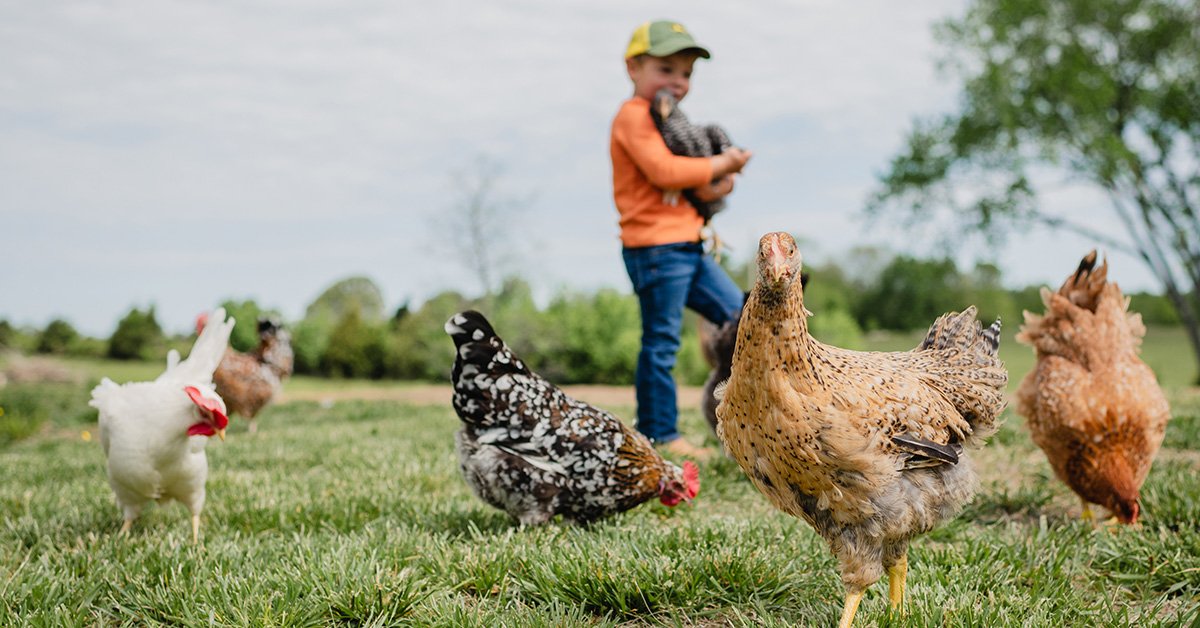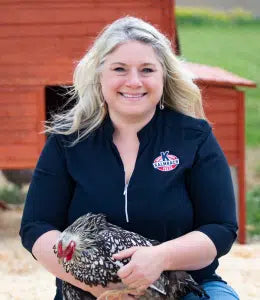Understanding the Change in a Pullet’s Body Before She Begins Laying

Did you get new chicks this spring? If so, your new chicks are probably entering their teenage period or are just beginning to mature into adult layers. The period right before a new pullet starts to lay eggs is generally referred to as Pre-Lay. This period in a pullet’s life is similar to the onset of puberty in a human’s life. There are many hormonal changes that trigger a pullet’s reproductive tract, alter her nutritional needs, and even change how she uses her bones. Today we are going to discuss these changes and how your feed can help prepare your girls for the changes to come.
What is the Pre-Lay Period?
In new pullets, the pre-lay period is generally from 4 months of age to the time you find your first 1-2 eggs. This period can be just a few short days or up to a month, depending on the breed you choose and their genetic potential. During this time, a number of changes are happening in a pullet’s body as she prepares to become a mature laying hen.
Hormonal Changes
Egg production is a reproductive function in female poultry. When a female chick hatches from her egg, she already has follicles present in her reproductive tract. These follicles will eventually become her first eggs, but it takes a little while to get there!
Around the time of reproductive maturity (4-5 months of age), a flood of hormones from the hypothalamus will activate egg formation. These hormones are responsible for yolk growth and formation. These hormones are also the reason that egg production is light sensitive. We all know that egg production goes up when the day length increases in the spring and summer. Well, the light from that increased day length directly affects the hormonal function of the hypothalamus and naturally stimulates more yolks to be produced.
At the same time, other organs in a pullet’s body are ramping up their function too. The pituitary hormones are working to release these new yolks so they can make their way into the reproductive tract so the rest of the egg can start forming. The sex hormones (estrogen, testosterone, progesterone, etc.) are also being produced by the ovary and stimulating the oviduct and other parts of the reproductive tract to mature and prepare for egg making. All these natural hormonal functions will start to work together and eventually egg production will sync into a very efficient 24-hour cycle.
Skeletal Function
One of the most fascinating changes in a pullet’s journey to mature laying hen is what happens to her bones. Right before the pre-lay period, female birds will begin switching from building hard, structural bone to building a special type of bone called medullary bone. Medullary bone is a woven bone that acts as a reservoir for calcium. Female birds can store calcium in their medullary bone, pump the calcium out for egg production, and then reabsorb extra calcium to be used later. This entire process is driven by estrogen and usually starts about three weeks before the first egg is ever produced. This change in bone type is completely unique to birds and some reptiles! It’s an amazingly efficient way for young pullets to prepare for peak egg production ahead.
Nutritional Changes
Because of these massive hormonal changes in our teenage pullets and because of their essential need to produce medullary bone, it’s important to consider some of the changing nutrient needs in a pre-lay pullet. These on-the-cusp pullets need more calcium to prepare for peak egg production. It’s a good idea to switch your pullets to a high-quality layer feed, like Henhouse Reserve® or All Natural 17% Layer at 4 months of age. Even if your pullets haven’t begun to lay yet, they can still pump the extra calcium found in a complete layer feed into their newly developed medullary bone. This will give them a calcium reservoir to use when full egg production starts soon.
If you have management restrictions that prevent you from switching to a complete layer feed at 4 months of age, consider providing a supplemental calcium source, like oyster shells or limestone chips, in a separate feeder. This strategy will help your early-maturing pullets prepare for their peak egg production and will result in higher quality eggs in the future.
At Kalmbach Feeds, we love our chickens, and we know you do too. Stay tuned! We are so excited to continue writing about all of the topics that are important to you. Keeping poultry is such a wonderful experience and the rewards are many! If you have any questions about the nutrient needs of your birds, feed options, or general poultry keeping, please let us know.
*All hormones referenced in this article pertain to natural bodily functions. Federal regulations prohibit the use of added hormones or steroids in poultry feed.
